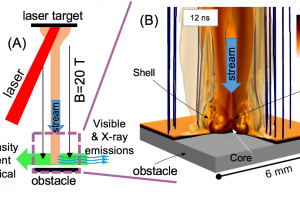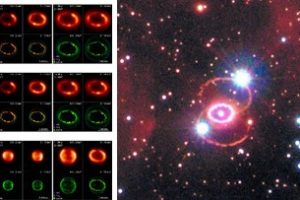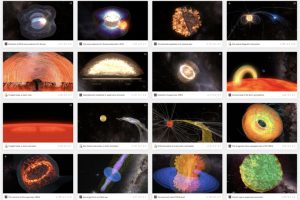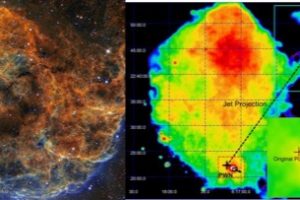Category: Senza categoria
Developed a method to account for spots and limb darkening to retrieve exoplanets atmospheric spectra. The study: “Correcting the effect of stellar spots on ARIEL transmission spectra – II. The limb-darkening effect” of G. Cracchiolo (INAF – OAPA/UNIPA) recently appeared on MNRAS

To date, exoplanetary transits have allowed astronomers to discovery more than 70% of known exoplanets. Besides, by analysing stellar spectra acquired during the transits it is possible to study the atmospheres of the transiting exoplanet. During the transit, in fact, the planet is crossing the stellar disc, causing a small and periodic dimming of stellar observed flux. If the exoplanet
» Read more(Italiano) DISPERSAL TIMESCALE OF PROTOPLANETARY DISKS IN THE LOW-METALLICITY YOUNG CLUSTER DOLIDZE~25
(Italiano) Scomparso il professor Nichi d’Amico, presidente dell’Istituto Nazionale di Astrofisica
Laboratory experiments to recreate the accretion in T Tauri stars

Accretion is a ubiquitous phenomenon in the Universe, occurring over a wide rande of scales: From the small T Tauri stars to the enormous black holes in the center of galaxies. In particular, T Tauri stars are very young stars (a few million years old) still surrounded by a disk, called protoplanetary disk, and still acrreting gas from their disks.
» Read moreA new model developed in OAPA connects for the first time supernovae, progenitor and the properties of the remnant SN 1987A

Stars more massive than 9 solar masses end their evolution in spectacular supernova explosions. These explosions are triggered by the gravitational collapse of the core of such massive stars, once the thermonuclear reactions are exhausted and the core is not supported against gravity by the pressure produced by the reactions. Supernovae are not simple spherical explosions, but rather complex phenomena
» Read more3DMAP-VR: a project to develop 3D astrophysical models for Virtual Reality

The development of numerical models is a powerful method to explore properties and evolution of astrophysical objects, mainly for remote objects or when the necessary spatial details are higher than the resolution of modern telescopes. These models can be both hydrodynamical or magneto-hydrodynamical, depending on the importance of the effects related to the magnetic fields. In the last years, the
» Read moreConfirmed around a 40 million years old star the youngest planet discovered by TESS so far
The final architecture of a planetary system is the result of a complex interplay between several processes, such as the dispersion of the protoplanetary disk from which the planetary system formed, and the gravitational interaction between the newborn planets. Besides, these processes can be affected by the environment and by their central star. One of the most important process dictating
» Read more11 – 18 Novembre 2018 – Settimana Light in Astronomy
IC 443: un caso unico di SNR con jet sovra-ionizzato

di Mario Giuseppe Guarcello ( segui mguarce) Lo studio dei resti di supernova, nubi formate dalle esplosioni di supernova, sono oggetti di grande interesse scientifico. Queste nebulose, infatti, non sono semplicemente il residuo di uno dei fenomeni più violenti che avvengono nell’Universo (un’esplosione di supernova dal collasso di una stella massiva, ossia le “core-collapse supernovae”, produce un’energia pari
» Read more
